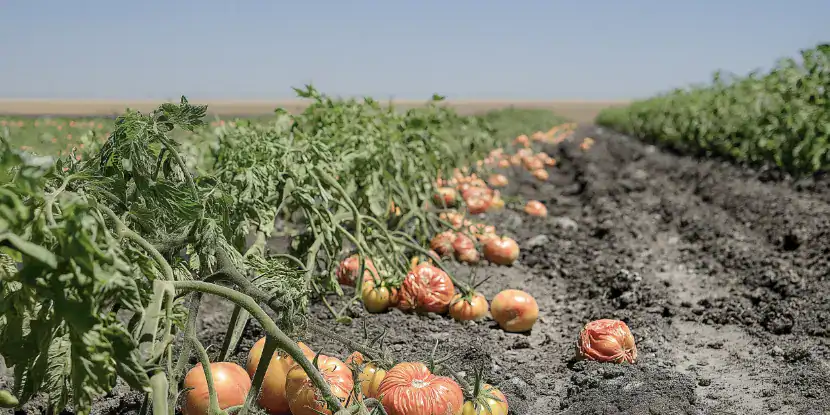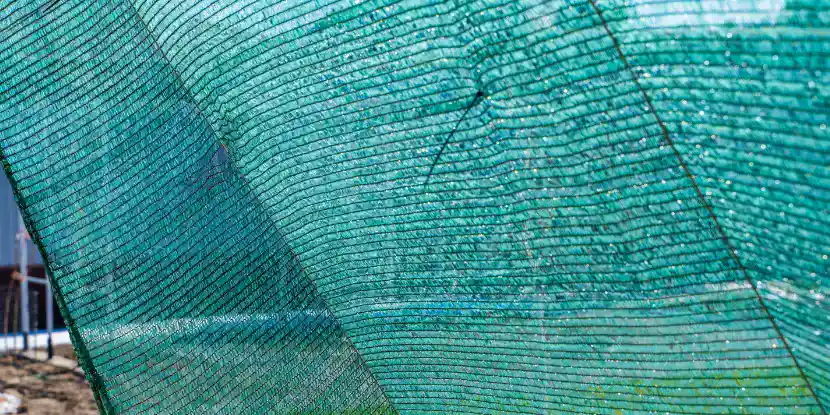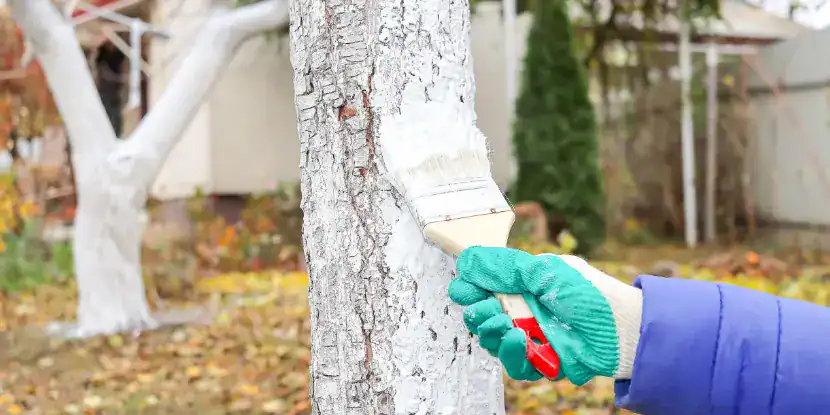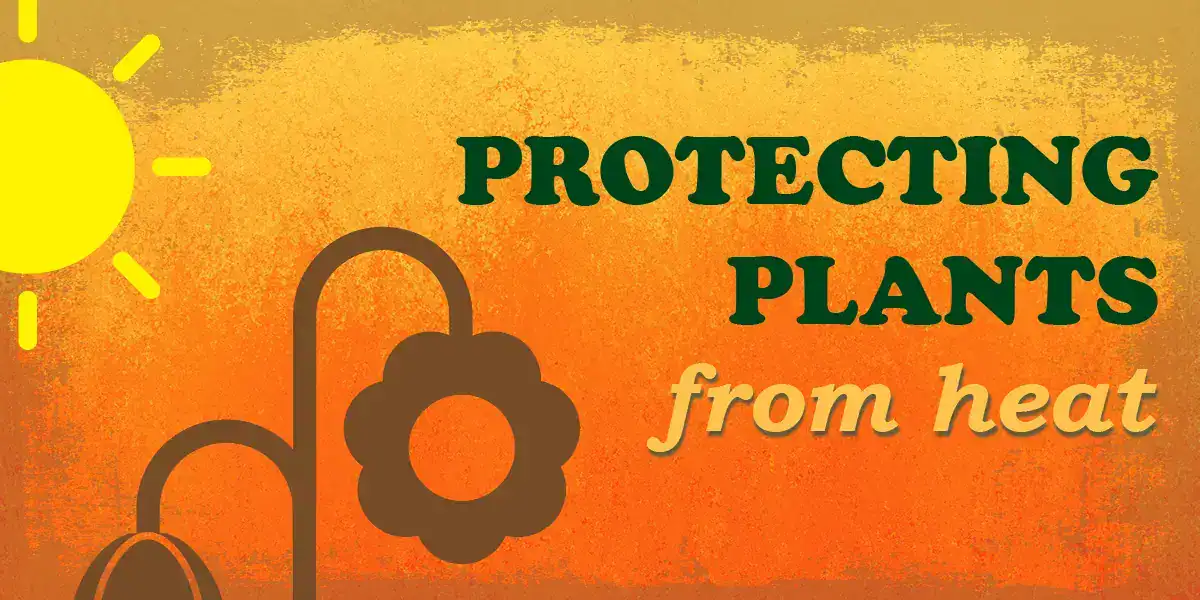Today’s weather report? Another heat wave lasting a week. Welcome to the dog days of summer in SoCal.
Extreme heat is hard on your plants, too. Prolonged exposure to temperatures above 95°F can cause leaf scorch, wilting, and sunburn in sensitive plants like lettuce, ferns, hydrangeas, and impatiens. Once leaf tissue is scorched or sunburned, it doesn’t recover, even when temperatures cool.
Soil temperature rises faster than air temperature. The topsoil can reach 120°F or more during heat waves, especially in unshaded or unmulched areas. This can harm delicate roots and kill soil microorganisms that plants rely on for nutrient absorption.
Many plants need cooler nighttime temperatures to recover from daily heat stress. Heat waves and warm nights above 75°F can prevent this recovery, leading to stunted growth or flower or fruit drop, especially in tomatoes and peppers.
Plants native to the region, like California buckwheat or sagebrush, have adapted to drought and heat. In contrast, vegetables, non-native ornamentals, and tropicals (like fuchsias or azaleas) often suffer or perish without shade and extra watering.
So what’s a gardener to do? Throw in the towel? Pray for rain?
This guide will help you recognize the signs of heat-related plant damage, offer planting strategies, and share tips to keep your garden green even during scorching summer days.

A badly sunburned philodendron leaf. Even indoor plants can suffer leaf damage if placed in an overexposed west-facing window.
Plant Sunburn & Heat Stress
Sunburn and heat stress are the greatest summer threat to your garden, especially in inland Southern California areas like Riverside or Palm Springs, where temperatures frequently soar above 100°F.
Plant Sunburn
This occurs when intense sunlight damages plant tissues. Similar to human skin, plant leaves and stems can burn under too much direct sun exposure.
Heat Stress
Heat stress happens when temperatures rise to levels that hinder a plant’s natural processes, like photosynthesis and water absorption. This causes dehydration and stunted growth.

Tomatoes are among the most heat-sensitive vegetables.
Recognizing Signs of Heat-Related Plant Damage
Identifying plant sunburn and heat stress early can save your plants from worsening damage.
Signs of Sunburn
- White or brown spots on the leaves, usually on parts exposed to direct sunlight.
- Scorched edges with a dry, crispy feel.
- Bleached or faded patches in dark-green foliage.

Sunburn on a luffa leaf. This poor leaf will never be the same.
Signs of Heat Stress
- Wilting, even with sufficient water. This indicates the roots can’t keep up with the heat.
- Leaf curling or drooping, as plants try to reduce surface area exposed to sunlight.
- Flower drop, fruit drop, or slowed growth.
Planting Strategically to Prevent Heat Stress
Sound planting decisions set the foundation for a resilient garden.
Best Times for Planting
- Early Spring or Late Fall: Avoid planting during the peak of summer. Cooler seasons help plants establish their roots before extreme heat events.
- Morning Planting: If you must plant during summer, do it in the early morning when temperatures are cooler, allowing your plants to settle before the sun peaks.
Best Areas for Planting
- Shade-Adjoining Areas: Position plants where they benefit from shade created by nearby trees, fences, or structures during afternoon heat.
- Western-facing Sides: Use taller, heat-tolerant plants as a buffer on the western side of your garden to shield delicate plants from harsh afternoon sun.
- Sloped Gardens: For hilly areas, plant heat-sensitive species on the shadier side of slopes.

Bark, straw, and leaf mulch can lower soil temperatures by up to 10°F.
Best Plants for Heat-Prone Areas
Opt for these heat-tolerant plant varieties in Southern California’s inland environments:
- Garden Vegetables: Eggplants, okra, and cherry tomatoes.
- Fruit Trees: Citrus varieties like lemon and lime thrive in heat.
- Ornamental Plants: Succulents, agaves, and lavender handle sunlight and heat exceptionally well.
Caring for Plants in Extreme Heat
Once your plants are in the ground, proactive care becomes vital when a heat wave arrives.
Tips for Garden Vegetables
- Deep Watering: Water deeply early in the morning or late evening to ensure water reaches the root zone.
- Mulching: A 2–4 inch layer of organic mulch (e.g., bark, straw, or compost) insulates soil, reduces surface temperatures, and retains moisture. It can lower soil temperatures by up to 10°F.
- Temporary Shade Cover: Use shade cloths (30%- 50% density works well for veggies) to block excess sunlight during heat waves.

Shade cloths block sunlight while allowing for airflow, so they don’t trap heat.
Tips for Fruit Trees
- Whitewashing: Apply a diluted mixture of one part white latex paint to one part water to protect trunks and limbs from sunburn. As a bonus, this also protects against boring pests.
- Drip Irrigation: Install a drip irrigation system to keep trees hydrated without wasting water.
- Pruning Wisely: Avoid heavy pruning during summer, as it exposes tender inner branches to direct sun.
Tips for Ornamental Plants
- Strategic Relocation: Move potted plants to partially shaded areas during extreme heat.
- Anti-Transpirants: Spray anti-transpirant products to reduce water loss through plant leaves.
- Group Planting: Cluster potted plants to create a microclimate with increased humidity.

Diluted white latex paint can protect tree trunks and branches from excessive heat and pest infestations.
FAQs & Proactive Steps: Protecting Plants from Heat
Q: Can I use tarps instead of shade cloths?
No. Tarps can trap heat, making conditions worse for plants. Shade cloths allow airflow while blocking excess sunlight.
Q: How often should I water during a heatwave?
This depends on the plant type, but generally, during excessive heat, water deeply every 1–2 days, aiming to soak the root zones. Avoid overwatering, which can cause root rot.
Q: What’s the best type of mulch for gardens?
Organic mulches like straw, bark chips, and shredded leaves are excellent for maintaining soil moisture and reducing soil surface temperatures.
Q: My ornamental plants still wilt even in the shade. What should I do?
Raise humidity levels around these plants by misting them lightly or grouping pots.
Q: Can sunburned leaves recover?
Sadly, no. Sunburned leaves are permanently damaged and may eventually drop. However, the plant can survive and grow new foliage with proper care.
Q: Should I fertilize during a heatwave?
Avoid fertilizing during extreme heat as it can stress plants further. Wait until conditions cool.
Q: Do succulents need protection from sunburn?
Yes, even succulents can get sunburned in high heat combined with direct sunlight. When temperatures soar, provide light, filtered shade.
Q: Are there any climate-specific resources for California gardeners?
Local gardening groups and agricultural extensions, like the UC Master Gardener Program, often have heat-specific resources tailored to California’s climate zones.

